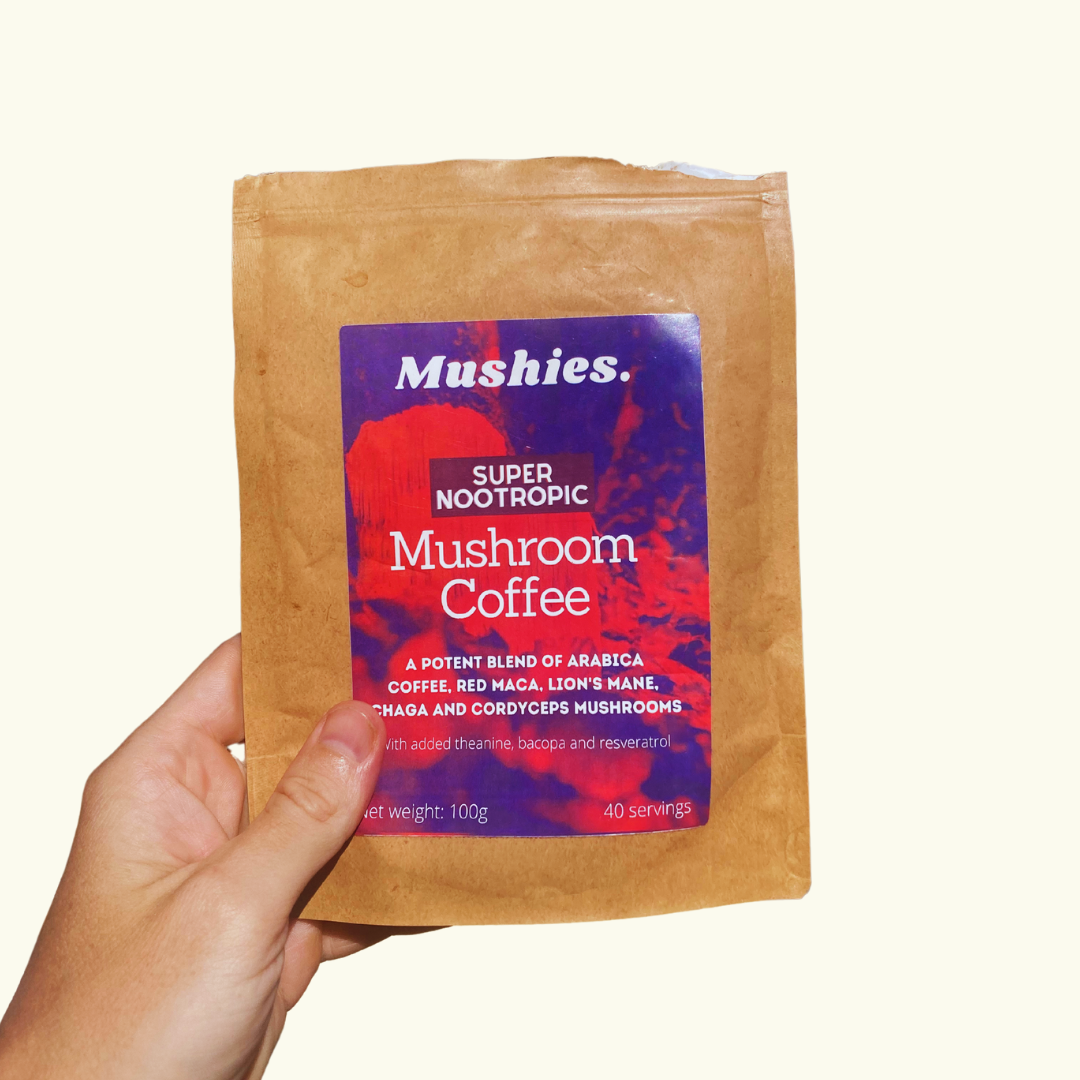Have you ever pulled an all-nighter, scrolled your phone until 2 a.m., or found yourself under bright artificial lights long after sunset and thought, “Hmm… this can't be good for me”. Well, it isn't.
Excessive light exposure isn’t just messing with your sleep, it can actually rewire your body’s fat and energy systems. There's now mountains of research showing that artificial light at night (ALAN) wreaks havoc on your metabolic health.
However, a recent study found that a natural compound called cordycepin (found in cordyceps mushrooms) may reduce the negative effects, suggesting that the mushrooms may offer a potent tool for protecting metabolism.
Importance of light
Light isn’t just for seeing. it’s a biological signal. Our bodies evolved under a stable rhythm of day and night, light and dark. That rhythm helps regulate our sleep-wake cycle, hormones, metabolism, and even brain health.
But in modern life - with bright screens, long work hours, artificial lighting well into the evening - we violate that ancient cue. And that matters because when the light-dark cycle gets skewed, metabolic rhythms shift too. This leads to disfunction in digestion, fat storage, energy burn, and repair processes.
The recently published 2025 study in Fungal Zoology & Mycology used mice to model what happens when the light–dark cycle is flattened by continuous light. The result was fat gain, brown fat dysfunction, and a clear knock to energy balance and metabolism.
That’s especially relevant for health-conscious adults as metabolism, mitochondrial efficiency, thermogenesis and circadian synchrony all tie into disease prevention, cognitive health, and longevity.

Study breakdown
Here’s what the study found, and why it matters...
1. Light overload = metabolic disruption
Mice exposed to 24-hour light for five weeks ate less, yet gained more body fat percentage, and showed elevated blood triglycerides (TG) and lowered “good” HDL cholesterol. In short, despite eating less food, their bodies became less efficient at burning fuel and more prone to storing fat.
2. Brown adipose tissue (BAT) got “whitened”
What is BAT? Unlike white fat (which stores energy), brown fat is rich in mitochondria, uses UCP1 to burn fuel into heat, contributes to energy balance and metabolic health (and may even support brain health by helping maintain mitochondrial fitness).
In the light-exposed mice, the brown fat changed from many small lipid droplets (“multilocular”) to one big droplet (“unilocular”), which is a sign of “whitening” (losing its browning/thermogenic character). Mitochondrial fusion/fission genes (Mfn1, Mfn2, Drp1) and thermogenic genes (Pgc-1α, Ucp1) were suppressed.
3. Molecular pathways: circadian + AMPK disruption
The researchers ran RNA-seq on the brown fat tissue and found 363 differentially expressed genes, with enrichment in pathways around unsaturated fatty acid biosynthesis, insulin resistance, MAPK signalling, circadian rhythm, AMPK signalling, adipocytokine signalling, etc.
The “hub” genes include heat-shock protein family (stress response) and key metabolic regulators like MTOR, PPARGC1A, PRKAG2, PRKAB1, FOXO1 - all of which are tied into AMPK (adenosine monophosphate-activated protein kinase), the master metabolite sensor. In the light-exposed mice, genes like Prkab1, Mtor, Foxo1, Ppargc1a were downregulated.
4. Enter cordycepin
The team found cordycepin reversed many of the negative impacts of continuous light. It restored multilocular morphology of the brown fat, increased phosphorylated AMPK levels and significantly up-regulated Pgc-1α and Ucp1 at the gene and protein level.
Put simply, while continuous light impaired BAT, suppressed AMPK, and reduced thermogenesis and energy burn, cordycepin kicked AMPK back on and helped restore brown fat function.

Previous research
This isn't the first study to show metabolic benefits from cordycepin. A study we reported on earlier this year, found mice treated with cordycepin for 4 weeks showed significant physical improvements including lower body weight and total fat mass, improved glucose tolerance (less insulin resistance), and educed fat buildup in the liver.
Another found the ability of cordycepin to restore metabolic disturbances, suggesting its potential for addressing the systemic effects of chronic stress and depression. And the compound has also been shown to reduce toxic protein buildup in the brain and support neuronal health.
Why this matters
Many cutting edge health researchers are coming to the conclusion that metabolic imbalance is that root of many common diseases, including cancer, neurodegenerative disease, and even many mental health conditions.
For anyone who cares about vitality, longevity and avoiding chronic disease, paying attention to metabolic health is vital. That means paying attention to your environment (especially light exposure) and using tools like cordyceps mushrooms to protect your metabolism.
Practical Applications
Great, so we understand the science a bit more. But what can you do with knowledge?
-
Respect your light-dark cycle. Make your environment align with your ancestral rhythm. Dim lights after sunset, avoid screens at least an hour before bed, expose yourself to bright natural light in the morning. Our modern habits of extended artificial light could be messing with your circadian rhythm and hence metabolism.
-
Support your AMPK & mitochondrial health. AMPK is a metabolic “master switch” helped by moderate exercise, fasting or time-restricted eating, cold exposure, and some nutrients (e.g., cordycepin!). Even 20-30 minutes of brisk walking, or a cold shower, activate AMPK.
-
Consider functional mushroom extracts that target these pathways. The study suggests that cordycepin (from Cordyceps) activates AMPK / PGC-1α / UCP1. You might consider a high-quality cordycepin-containing extract like ours.
-
Keep brown fat alive. While you can’t “see” your brown fat easily, habits like intermittent cold (cooler room at night, cold shower), avoiding chronic overheating (which can suppress BAT), and staying active all support brown fat’s thermogenic potential and mitochondrial health.
Conclusion
We often talk about light only in terms of sleep and eye strain, but this study invites us to consider light as a metabolic lever. In a sense, your lighting schedule (and the quality of your internal circadian rhythm) may influence how your body burns or stores fuel, how your brown fat behaves, how your mitochondria perform.
When the signal is disrupted (constant light), your system tends toward storage rather than burn. This can drain energy and focus.
The mushroom-derived cordycepin offers a fascinating solutions as a natural compound that could help reset the system. For anyone wanting to age well, stay disease free and think clearly, paying attention to light + mitochondria + metabolic signalling is foundational.
Want to explore further?
At Mushies, we’re digging deeper into how functional mushrooms like Cordyceps and compounds like cordycepin support bmetabolic health.
Check out our blog for more articles, join our newsletter, and browse our mushroom extract line (including our popular cordyceps extract) designed for clarity, focus and energy.






